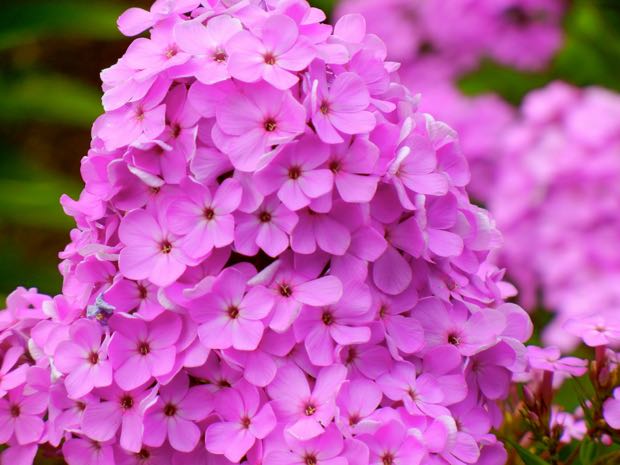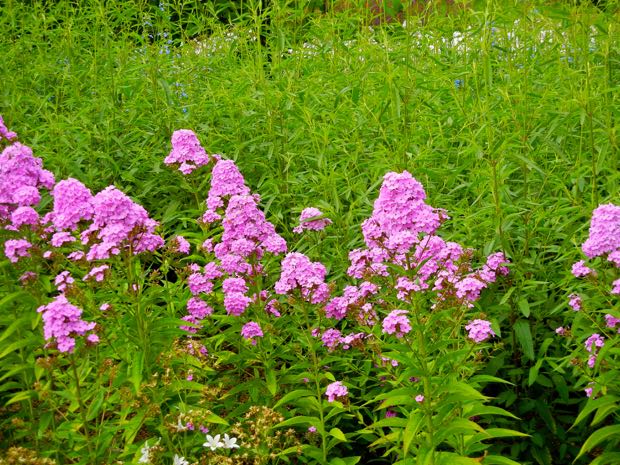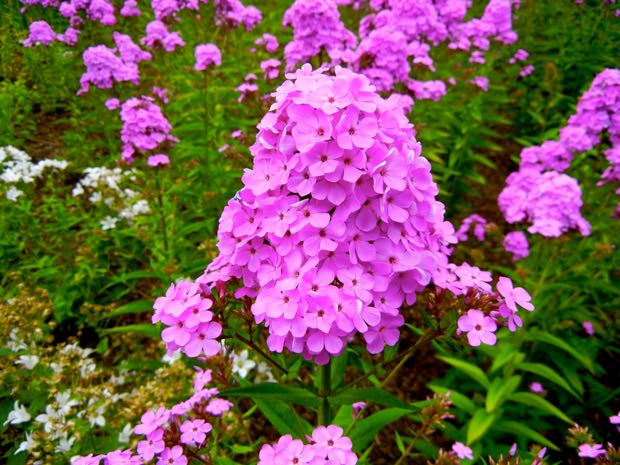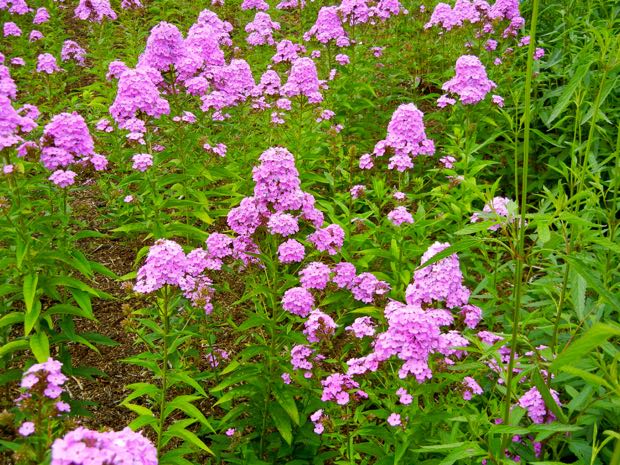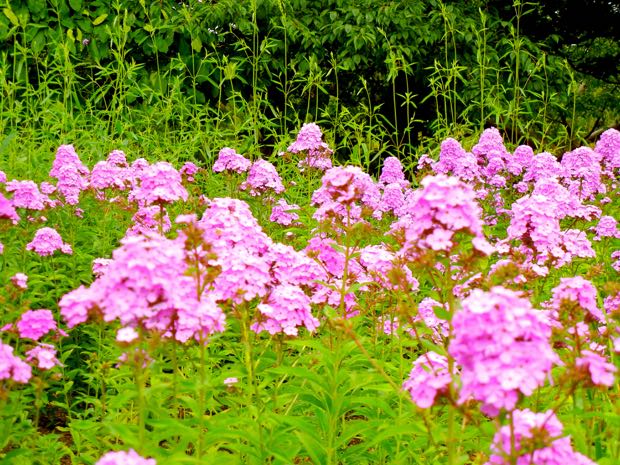Phlox arendsii ‘Hesperis’: The Fragrant Beauty from North America
Background: Phlox arendsii ‘Hesperis’ belongs to the esteemed Polemoniaceae family of plants. Native to North America, this herbaceous perennial showcases pyramid-like clusters of purplish-pink, fragrant flowers that bloom during the summer months. Its disease-resistant nature and ease of cultivation make it a popular choice among gardeners. ‘Hesperis‘ is an arendsii hybrid, resulting from crosses between Phlox paniculata and Phlox divaricata. It combines the attractive flowers of the former with the compact form of the latter, creating a captivating garden specimen.
Description: Phlox arendsii ‘Hesperis’ is an upright, conical perennial that forms a clump reaching up to 30 inches in height. It boasts stiff stems adorned with narrow, opposite, pointed, and deep green leaves, measuring around 4 inches in length. Each floret of this variety exhibits a long corolla tube and five flat petal-like lobes. The alluring lilac-purple flowers, densely packed in terminal clusters, emit a delightful fragrance, attracting butterflies and hummingbirds to the garden.
Growing Phlox arendsii ‘Hesperis’:
Sunlight and Soil Requirements: For optimal growth, Phlox arendsii ‘Hesperis’ thrives in full sun exposure. However, it can tolerate partial shade. The plant flourishes in rich, fertile, and well-drained soil. It is important to ensure that the roots are kept cool and avoid watering from overhead, as this can lead to powdery mildew. Adequate air circulation is crucial to prevent this fungal issue, so it is advisable to space the plants well and thin out stems as needed.
Watering: Phlox arendsii ‘Hesperis’ requires regular watering, especially during hot and dry weather conditions. Deep watering is recommended to ensure the water reaches the roots. Allow the soil to dry slightly between waterings to avoid overwatering. However, the plant is intolerant of drought and should be watered during dry spells. It is important to avoid overhead watering to minimize the risk of powdery mildew.
Fertilizer: Phlox arendsii ‘Hesperis’ does not have high fertilizer requirements. Apply a balanced fertilizer in spring to provide the necessary nutrients. A light application of fertilizer in early fall can also be beneficial for the plant’s overall health and vigor.
Pests and Diseases: One common issue with Phlox arendsii ‘Hesperis’ is powdery mildew. To prevent this fungal disease, it is recommended to water the plant in the morning, allowing the leaves to dry before nightfall. In case powdery mildew occurs, appropriate fungicidal treatment should be applied. Additionally, the plant can be susceptible to spider mites and plant bugs, especially in hot and dry conditions. Regular monitoring and proper pest management practices are essential to keep these pests under control.
Propagation:
Phlox arendsii ‘Hesperis’ can be propagated through two methods: seed and division. Sowing the seeds in spring provides the ideal conditions for successful germination. The division technique can be performed either in spring or fall, depending on your preference and the specific growing conditions. By dividing the plant, you can create new individual plants from the existing clump, ensuring its continued growth and multiplication.
Deadheading and Winter Care: To encourage continuous blooming, it is advisable to deadhead spent flowers. This practice not only promotes new blooms but also helps in preventing powdery mildew. In colder climates, provide winter protection by mulching around the plant with a layer of 2-3 inches of mulch. This will help to insulate the roots and safeguard them from the harsh effects of cold weather.
Important Notes:
While Phlox arendsii ‘Hesperis’ is a captivating addition to any garden, there are a few important considerations to keep in mind. This plant can be susceptible to powdery mildew and root rot, so it’s crucial to maintain good air circulation and avoid overwatering. Regular monitoring for pests like spider mites and plant bugs is also recommended, particularly during hot and dry conditions.
Furthermore, it’s important to note that the leaves and seeds of Phlox arendsii ‘Hesperis’ are toxic to both humans and animals. When handling the plant, take necessary precautions to avoid any contact with the sap, and keep it away from children and pets.
With proper care and attention, Phlox arendsii ‘Hesperis’ can reward you with its enchanting fragrance, charming flowers, and vibrant presence in your garden. Enjoy the beauty of this North American native and create a delightful haven for butterflies and hummingbirds to visit.

